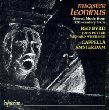Leoninus(c.1135-c.1201)During his lifetime, Leoninus wrote both poetry and music. Among his accomplishments as a poet was the setting of the first eight books of the Old Testament as hexametric verse. However, today he is chiefly remembered for his contributions as a composer of polyphonic liturgical music. While most composers of this genre were anonymous, Leoninus is credited with having written the Magnus liber organi (The Great Book of Organum), a work that notated Leoninus’s sacred polyphonic compositions and which greatly influenced western musical practices for the next several hundred years. LifeWhile there is some debate as to the identity of the Magnus liber organi’s composer, the theory that the composer was Magister Leonius (Leoninus) of the Paris Notre Dame Cathedral is the most commonly accepted one. Active in Paris during the building of the Notre Dame Cathedral, Leoninus’s life corresponds with a very exciting time in French history. He himself was a canon at Notre Dame and would have witnessed firsthand the creation of this architectural masterpiece. Only traces of evidence concerning Leoninus exist, but scholars have determined something of the composer’s life. Born some time around 1135, Leoninus (often referred to as Leonin in many texts) was both a poet a musician. A native Parisian, he was most likely educated in the cathedral schools of Notre Dame and probably held a master of arts; he may also have held a master of theology, which was considered a more advanced degree. Similar to most composers of the era, he worked in the service of the Church. Composers at that time who wrote liturgical polyphony tended to be educated and often served as high-level administrators in the Church hierarchy. Leoninus was no exception. It is known that Leoninus served as a canon at the Parisian church of St. Benoit, and that by the 1180s he worked as a canon at the more prestigious Notre Dame Cathedral. By 1192, Leoninus entered the priesthood. He seems to have remained at Notre Dame until the end of his career, as records of him cease there and elsewhere by 1201. Around the time of his death, Leoninus bequeathed a substantial amount to Notre Dame in order to create a memorial office for the salvation of his soul. Magnus liber organiA collection of Leoninus’s organa, the Magnus liber organi is significant because it notated what had been largely an unwritten performance practice. While the original text is not extant, a version does exist that contains forty-two compositions (scholars believe the original probably contained ninety-three compositions). This book of compositions is the first text that indicates a form of notated rhythmic language and is a work that significantly affected rhythmic and melodic practices for the next three centuries. The connection between Leoninus and the Magnus liber organi was first made by the English theorist Anonymous IV, who either taught or studied at the University of Paris in the thirteenth century and whose lecture notes indicated that Leoninus was responsible for the Magnus liber organi. In his notes, which were eventually published in 1864, he wrote, “And note that Master Leoninus, according to what was said, was the best composer (or singer) of organum…who made the great book of organum from the gradual and antiphonal for amplifying the divine service.” References:Baldwin, John W. “The Image of the Jongleur in Northern France Around 1200.” Speculum 72.3 (1997): 635-663. Pirrotta, Nino. “Dante Musicus: Gothicism, Scholasticism, and Music.” Speculum 43.2(1968): 245-257. Roesner, Edward H.: ‘Leoninus [Magister Leoninus; Magister Leonius, Leo, Léonin]’, Grove Music Online ed. L. Macy (Accessed 24 March 2008), <http://www.grovemusic.com> Stolba, K Marie. The Development of Western Music: A History. Dubuque, IA: Wm. C. Brown, 1990. Weiss, Piero and Richard Taruskin, annotators. Music in the Western World: A History in Documents. New York: Schirmer, 1984. Wright, Craig. “Leoninus, Poet and Musician.” Journal of the American Musicological Society 39.1(1986): 1-35. |


